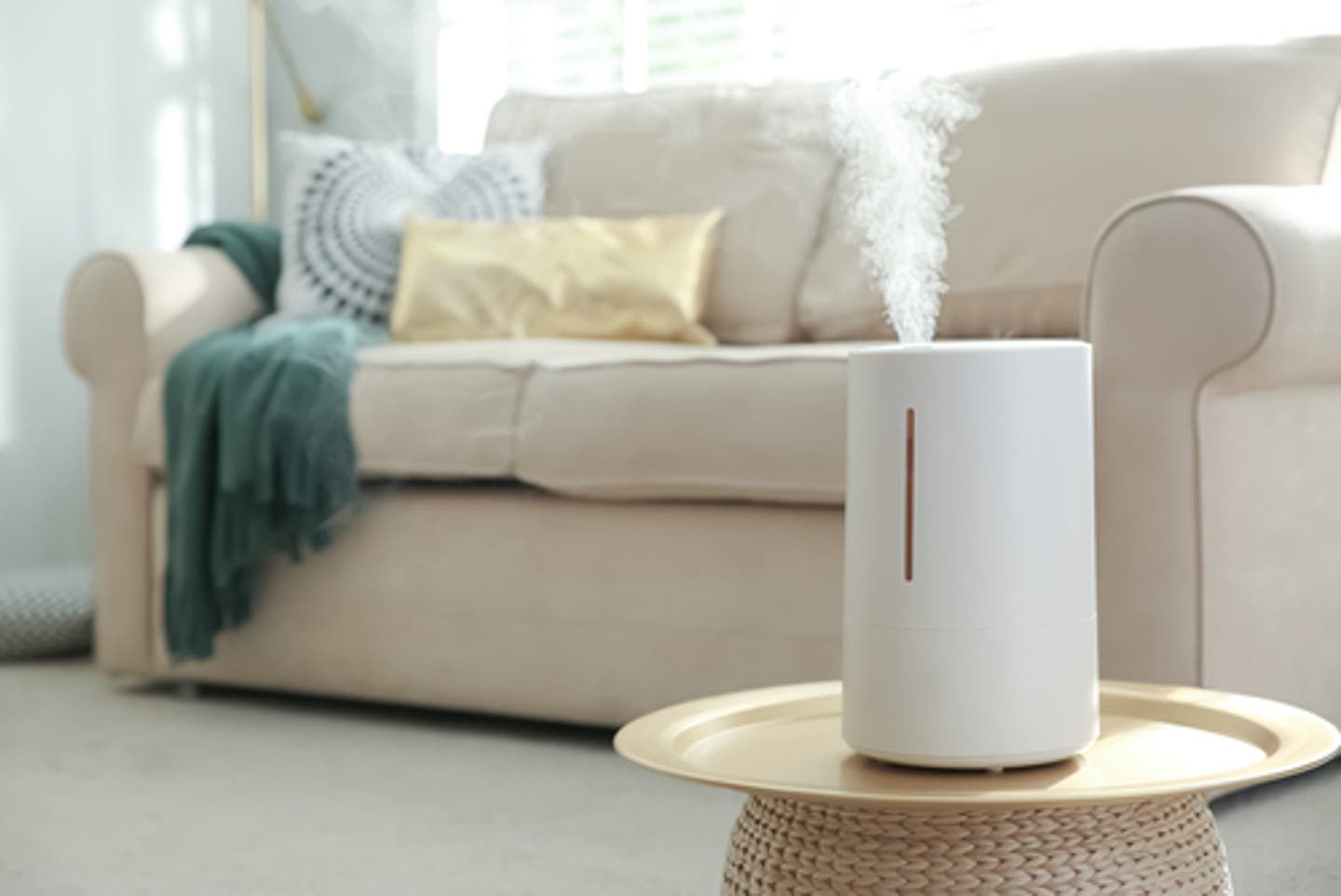
Humidifiers are popular, useful appliances in homes and businesses, keeping air fresh and full of moisture when it gets dry. Wintertime can be especially hard on allergies and skin, causing bloody noses, dry sinuses, and cracked lips.
Using a humidifier wisely is a key part of maintaining a well-functioning property, in the winter and year-round. Keeping your air healthy can help protect loved ones, pets, friends, employees, clients, and more.
Incorrect or careless maintenance of a humidifier could be just the recipe for mold growth in the tank. This can lead to mold spores, bacteria, or fungi being dispersed into the air by the humidifier’s mist.
How to Keep Your Humidifier Clean
Knowing how to clean your humidifier is an important part of home maintenance. You’ll need water, a towel, distilled white vinegar, an empty bottle or measuring cup, and a gentle cleaning tool like cotton swabs or a toothbrush.
Follow these steps:
- Remove the tank from the base. Then, to the well of the base, add either one cup of vinegar or a one-half cup of vinegar and a one-half cup of water.
- Use a toothbrush, cotton swab, or whatever cleaning tool you’ve gathered, reach into the crevices you can access to scrub off scale in the well.
- Rinse thoroughly until there’s no smell of vinegar, then towel dry.
- In the tank, pour one cup of vinegar and one cup of water. Let the solution soak for at least 20 minutes, swishing the water around periodically.
- Drain the solution and thoroughly rinse the tank until no vinegar smell remains. Towel dry.
- Return the tank into the base.
Humidifier Maintenance Tips
To give yourself a better chance of keeping mold out of your humidifier, follow these tips:
- Use distilled or demineralized water instead of tap water. Tap water contains minerals that might cause bacteria to grow inside your humidifier. Distilled or demineralized water contains significantly fewer minerals.
- Change humidifier filters per manufacturer guidelines (although you can always change filters more frequently if they’re dirty).
- Keep the area around the humidifier dry. Otherwise, items like drapes, carpets, windows, or tablecloths may get damp or wet.
- Follow the maintenance and cleaning instructions for any central humidifiers built into your central heating or cooling system.
- Consider replacing old humidifiers. Material can build up inside that’s hard to remove. To avoid health risks, it may be safer to discard any old ones and purchase new ones.
How Often Should You Clean a Humidifier?
It’s recommended that you clean your humidifier every three days. It’s also suggested that daily you
- unplug your humidifier.
- empty and rinse out the tank.
- towel-dry.
- refill the tank with fresh water. (This is especially important for cool-mist or ultrasonic humidifiers.)
Filters and wicks should be cleaned according to manufacturer recommendations.
If you ever need to store your humidifier, dry it thoroughly beforehand (this includes draining and cleaning it). Later, when you get it out of storage, clean the tank again, and only fill it when you’re ready to use it. Be sure to throw away any used cartridges, filters, or cassettes.
SERVPRO® Remediates Mold, Cleans Air Ducts, and Removes Odor
Speaking of clean air, your local SERVPRO franchise offers everything from mold remediation to air duct and HVAC cleaning, along with deodorization services.
If excessive moisture is present, mold can grow after just 24 to 72 hours. SERVPRO’s mold remediation services include a thorough assessment of your property, techniques to detect mold and areas of hidden moisture, and ultimately, a deep clean and remediation of mold spores. For more information, read about SERVPRO’s mold remediation process.
As for air duct, air vent, and HVAC cleaning, SERVPRO professionals follow standards for the air duct cleaning industry as defined by the National Air Duct Cleaners Association (NADCA). Using a variety of equipment and chemicals, SERVPRO franchises use chemicals registered with the United States Environmental Protection Agency (EPA).
Odor removal is an important part of cleanup and restoration. If your humidifier goes haywire or you find yourself in need of thorough deodorization services, give your local SERVPRO a call. Using a variety of techniques (such as using masking, pairing, and/or filtration agents), the odor removal process is completed in four steps. First, the odor source is removed. Second, residues are cleaned from surfaces. Third, conditions are re-created that caused odor penetration in the first place (with the goal of following the odor to its source and eliminating it). Lastly, sealing may be required on various surfaces exposed to the odor.
SERVPRO is Ready to Clean, Restore, and Reconstruct 24/7
If your humidifier causes issues, or you find yourself in need of cleanup services beyond what you can do yourself, SERVPRO can help. We offer everything from water damage cleanup and mold remediation to air duct and HVAC cleaning and odor removal.
With more than 2,300 franchises across the United States and Canada, there’s a SERVPRO location near you, ready to provide top-tier cleaning, restoration, and construction services at a moment’s notice.
With over 50 years in the industry, it’s no wonder SERVPRO is consistently rated as the #1 choice in cleanup and restoration.
Contact us to learn more, or visit our FAQ and Glossary.